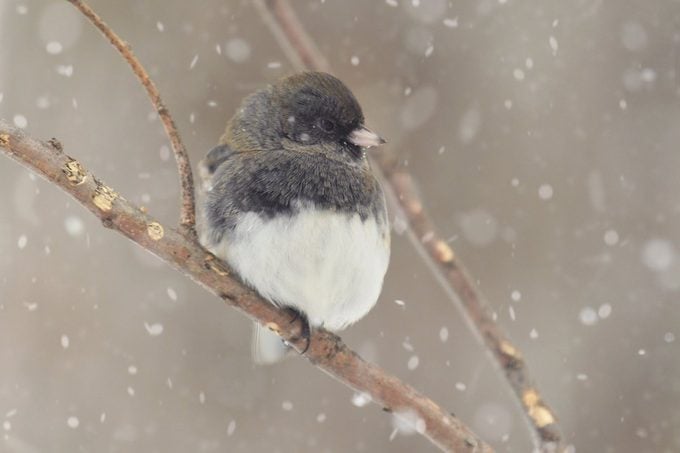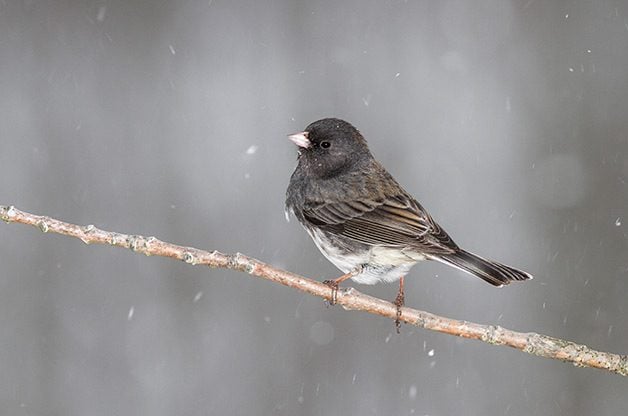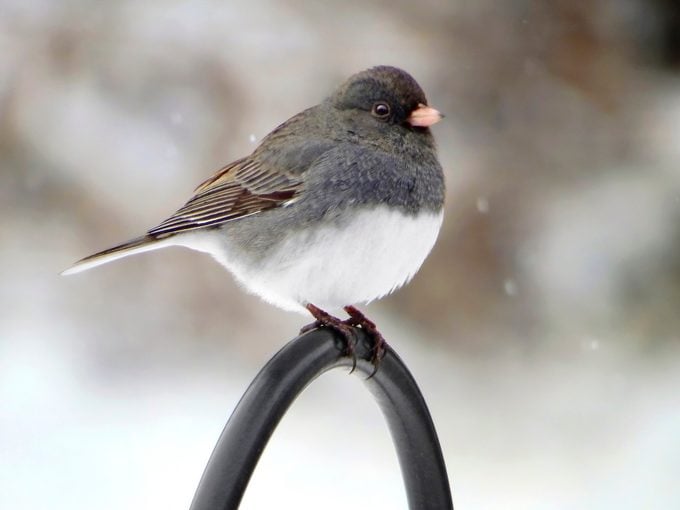Meet the Snowbirds: 8 Cool Facts About Junco Birds
Updated: Dec. 08, 2022
Discover facts about winter's favorite visitor: dark-eyed junco! Learn how long a junco bird lives. Also see why they are called snowbirds.
1. Juncos Are Nicknamed Snowbirds

The dark eyed junco has a cute nickname: snowbird! This is because a junco bird seems to bring snowy winter weather on its wings as it migrates. In the colder months they travel in flocks of 15 to 25 from northern evergreen forests to backyards all over the U.S.
Learn what a dark eyed junco looks like and sounds like. Oh, and you can’t miss out on these adorable junco bird pictures.
2. Their Namesake Bird is Endangered
Named for its natural habitat of Guadalupe Island, the Guadalupe junco is now endangered. Unique to Mexico, there may be fewer than 100 left in the world.
Junco vs chickadee: Here’s how to tell the difference.
3. One Junco Bird Species Has Many Variations
The subspecies of dark eyed juncos fall into five major groups: gray-headed, Oregon, pink-sided, slate-colored and white-winged.
Psst—did you know juncos are in the sparrow family?
4. Juncos Have a Long Lifespan

Banding records show that a dark eyed junco bird can live to be 11 years old. Can you guess how long hummingbirds live?
5. Look for Juncos on the Ground
Juncos make their home in woodland areas. Sure, they’ve got wings, but juncos prefer to hop around the forest floor. They spend as much as 65% of their time on the ground. Discover the best way to attract birds that don’t visit bird feeders.
6. Cold Weather Doesn’t Influence Junco Bird Migration
Beginning in 1924, biologist William Rowan’s research on dark eyed juncos revealed that these migratory birds respond more to changes in daylight than temperature. Learn why some birds migrate and others don’t.
7. Juncos Puff Up in Winter

When it’s cold outside, juncos grow down jackets. The coat of feathers on a junco bird is 30% heavier in winter than in summer.
8. Juncos Have a Favorite Birdseed
Attract juncos to your backyard ground feeders with millet. This small seed comes in two types, red and white.
Next, learn how to identify the American tree sparrow and chipping sparrow.
